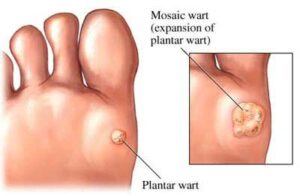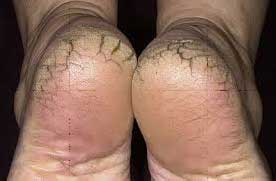Callous & Corns
Callous and corns are common skin conditions which are characterized by a localised area of thickened skin due to response of pressure and friction. They are both from an excess build up of dead skin. Corns are caused from a concentrated area of pressure, whereas callouses are from a disperse area. Due to the repetitive pressure and friction, the skin protects itself and as a result the skin thickens. There are four main types of corns – hard corns, soft corns, seed corns, and neurovascular corns. The common sites are the ball of the foot where there are pressure areas, in between the toes, and from tight shoes.
Risk Factors:
- Tight shoes
- Poor alignment of the bones (eg. Toes that overlap, bunions)
- Poor biomechanics (eg. Hypermobile 1st ray)
- Walking barefoot
Assessment – The podiatrists at toe-tal will diagnose the condition through a physical examination, and go through all the necessary treatments listed below to help you get back on the right path.
Treatment:
- Debridement of callous and/or corn from a podiatrist
- Podiatrist to determine the cause of the callous and/or corn and provide advice to try to slow down the progression or prevent the problem occurring again
- Wear well supported footwear
- Use web spacers, toe separators or gel toe caps as this will help to reduce irritation and pressure between the toes
- Footwear advice/modification which will help to redistribute the pressure evenly across the feet. Important to have cushioning present in the shoe. Talk to the podiatrist about what specific footwear suits your foot best.
- Apply heel balm or urea cream on a regular basis
- Patient can gently use a pumicestone or a foot file to remove the thick hard skin. Depending on the severity will require more regular treatment.
- Orthotic therapy to redistribute pressure evenly across the feet
Attention: Corn pads or OTC treatments which contain acid can be dangerous, especially for people with diabetes or circulation problems.
Plantar Warts “Verruca Pedis”
Plantar warts, also known as “Verruca Pedis” are noncancerous skin growths caused by a viral infection (human papillomavirus also known as HPV) in the top layer of the skin. Warts are spread from person to person through direct and indirect transmission. Without treatment most warts will resolve spontaneously within approximately two years. However, occasionally they are painful so need early intervention.
Symptoms:
- Pain with lateral pressure
- ‘cauliflower ’ appearance
Risk Factors:
- Communal bathrooms and showers
- Skin trauma
- Weakened immune system
Assessment:
The podiatrists at toe-tal will diagnose the condition through physical examination, and go through all the necessary treatments listed below to help get you on the right path.
Treatment (if painful):
- Over-the-counter topical treatment (to be used with caution)
- Debridement of the wart from a health professional (Podiatrist) and application of wart treatment including either: Sliver Nitrate, Salicylic Acid, Cryotherapy. May need a few follow up appointments for successful results
- Appropriate offloading may be required with padding from Podiatrist
- Avoidance of pressure from footwear
- Reduced risks and wear footwear in communal areas (eg. Wear thongs) and to cover all wounds and scratches when in this environment
Cracked Heels / Heel Fissures
Cracked heels or heel fissures, is described as splitting of the skin, which are a common foot condition we see in the podiatry clinic. The skin cracks with high pressure to heel, when skin of the heel are not hydrated properly. If cracks become deeper, it will become painful and even bleeding. In severe cases heel fissures can become infected, and can result in cellulitis.
Risk Factors:
- Dry skin
- Open-back shoes or sandal
- Excessive weight
- Prolong standing
- Circulation problems
- Medical conditions eg. Diabetes, psoriasis
Assessment – The podiatrists at toe-tal will diagnose the condition and go through all the necessary treatments listed below to help get you on the right path.
Treatment:
- Debridement of cracked heel from a professional (Podiatrists at toe-tal podiatry can debride fissures safely)
- Footwear advice/modification to redistribute the pressure off the heel – (talk to the podiatrist at toe-tal about what specific footwear would suit your feet best). Avoid wearing thongs and/or being barefoot as much as possible.
- Strap around the heel to decrease skin movement (Podiatrists at toe-tal podiatry can teach you how to do this)
- Wear closed in shoes and socks
- Apply heel balm cream or urea cream on a regular basis to keep skin hydrated
- Use pumicestone or a foot file to remove thick hard skin gently once a week or more often if required
- If it starts to bleed, apply an antiseptic and clean dressing. Observe closely until heals, and consider if need to make an appointment.
Contact Us.
Please contact the appropriate location for bookings.
Salisbury Medical Centre
PH: 3277 1621 - Fax: 3277 2887
ACE Sports Medicine – Hibiscus Sports Complex
PH: 3349 5733 - Fax: 3349 5122
Acacia Ridge Day And Night Chemmart Pharmacy
PH: 3277 4220 - Fax: 3255 5644
Brisbane Medical Specialists – Tarragindi
PH: 3184 0400 - Fax: 3892 7094
Morningside General Practice Clinics – Morningside Plaza
PH: 3399 4685 - Fax: 3395 7377
Any other enquiries please email info@toetalpodiatry.com.au or call 0422 389 652
